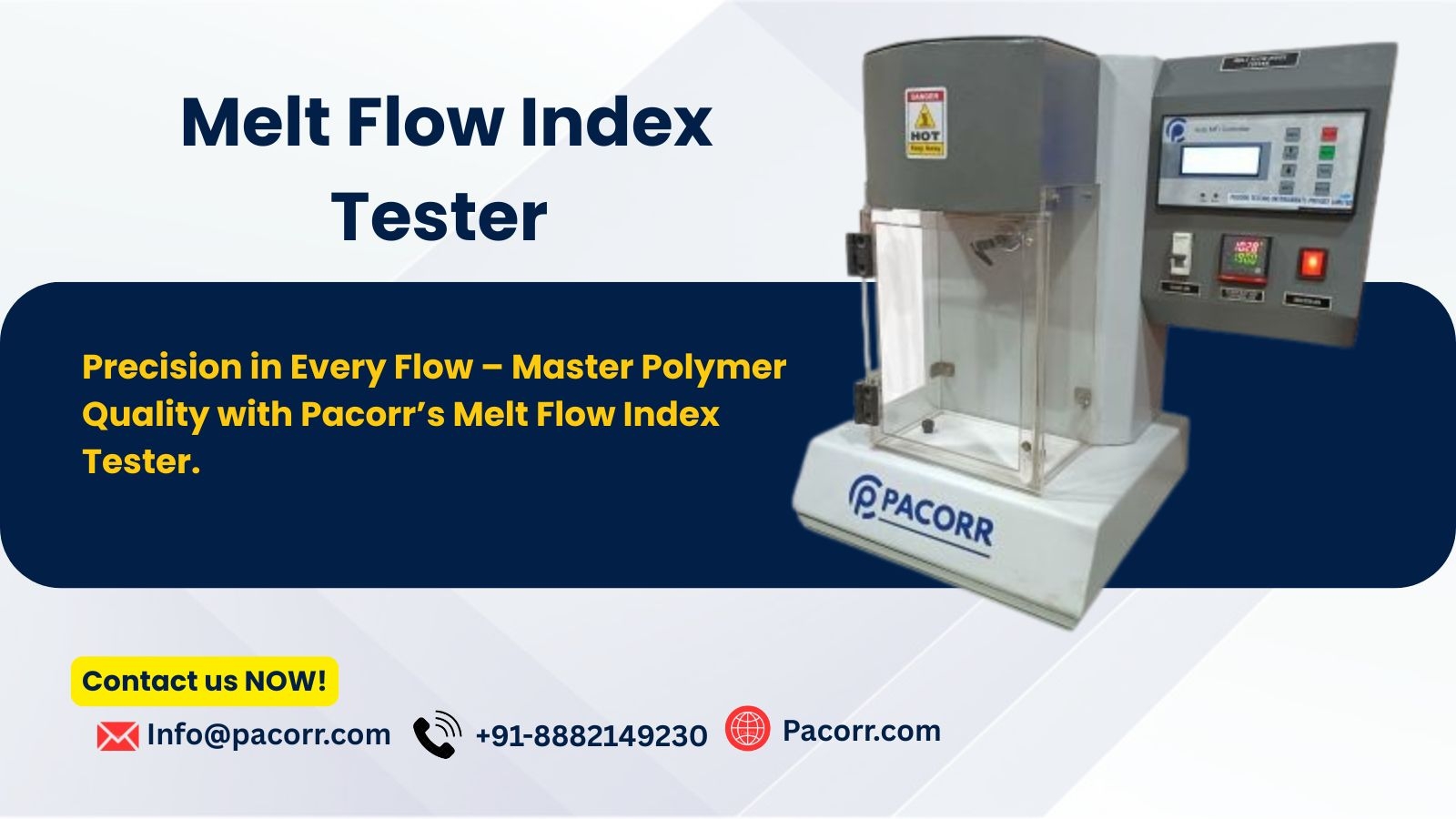The Melt Flow Index Tester (MFI) is an essential tool used in the polymer industry to determine the flow characteristics of molten polymers. This tester is critical for assessing the processing behavior of materials like plastics and resins, helping manufacturers ensure that they meet quality standards and perform well in their intended applications. In this article, we will explore the importance, working principle, and key benefits of the Melt Flow Index Tester.
What is the Melt Flow Index Tester?
A Melt Flow Index Tester is a device used to measure the flow rate of molten polymer materials under a standardized set of conditions. The test provides a critical parameter known as the melt flow index (MFI), which is an indication of how easily a material can flow when heated. The MFI is measured by extruding the molten polymer through a standardized die under a specific temperature and pressure. The amount of polymer that flows through the die in a specified period gives the MFI value.
This test is widely used to evaluate the processability of thermoplastics and resins in various industries, including automotive, packaging, and construction materials. By understanding the MFI, manufacturers can determine how well a polymer will perform during processing, helping optimize manufacturing processes.
How Does the Melt Flow Index Tester Work?
The Melt Flow Index Tester operates by heating a polymer sample to a predefined temperature, typically in the range of 190-270°C, depending on the material. The sample is then forced through a small orifice under a specified weight (load). The tester records the amount of polymer that flows through the die in 10 minutes, expressed in grams per 10 minutes (g/10 min).
Key components of the tester include:
-
Barrel and Die: These are used to heat and extrude the polymer.
-
Load Weights: These apply pressure to the material, simulating the stress that occurs during processing.
-
Temperature Control System: It ensures that the material is heated to the exact temperature required for the test.
-
Data Recording Mechanism: The device measures and records the flow rate of the polymer for analysis.
The flow rate, which varies for different materials, depends on factors like molecular weight, chain structure, and additives in the polymer. Materials with a low MFI tend to be more viscous, while those with a high MFI flow easily under pressure.
Why is the Melt Flow Index Important?
The Melt Flow Index plays a crucial role in the manufacturing and quality control of polymers. Here are some key reasons why it is important:
-
Quality Control: MFI testing is used to ensure that a batch of polymer meets the desired specifications. Consistency in MFI ensures that the material will perform predictably in production processes.
-
Process Optimization: By understanding the MFI of a material, manufacturers can adjust their processing parameters (temperature, pressure, and machine settings) for better efficiency and product quality.
-
Material Selection: MFI values help in selecting the appropriate polymer for specific applications. For example, a material with a higher MFI may be used in injection molding processes, while a lower MFI material may be chosen for extrusion.
-
Identification of Contaminants: If the MFI of a polymer deviates significantly from the expected value, it could indicate the presence of contaminants or degradation in the material, prompting further investigation.
-
Predicting Polymer Performance: The MFI is also an indicator of the polymer's final product properties, such as strength, elasticity, and stability. This is particularly useful for ensuring that materials meet regulatory and industry-specific standards.
Key Benefits of Using the Melt Flow Index Tester
-
Accurate Measurement: The MFI tester provides precise and reproducible results, ensuring consistency across batches and different production runs.
-
Easy to Use: Modern MFI testers are user-friendly, often featuring automated systems that reduce the need for manual intervention, saving time and reducing human error.
-
Time-Saving: The test can be performed quickly and provides instant results, allowing manufacturers to make real-time adjustments to their production processes.
-
Cost-Effective: By ensuring that polymer materials meet the required specifications, manufacturers can avoid expensive production errors, material waste, and delays.
-
Versatility: The Melt Flow Index Testing can be used to test a wide variety of materials, including polyethylene, polypropylene, PVC, and other common thermoplastics, making it a versatile tool for a wide range of industries.
Applications of the Melt Flow Index Tester
Melt Flow Index Testing is employed across various sectors that utilize thermoplastics, including:
-
Packaging Industry: It is used to test packaging films, bottles, and containers made from polymers such as PET, HDPE, and LDPE.
-
Automotive Industry: Manufacturers use MFI to assess materials for automotive parts that require high-performance characteristics.
-
Medical Industry: For the production of medical devices and packaging materials, MFI testing ensures the polymer meets regulatory standards for safety and durability.
-
Construction Industry: MFI helps determine the flow properties of polymers used in construction materials like pipes, insulation, and coatings.
Conclusion
The Melt Flow Index Tester Price is an indispensable tool for ensuring the quality, performance, and efficiency of polymer-based materials in a wide range of industries. Whether you are in the automotive, packaging, medical, or construction sector, understanding the MFI of your materials can lead to better manufacturing processes, higher-quality products, and cost savings.
If you are looking for a high-quality Melt Flow Index Tester, Pacorr Testing Instruments Pvt Ltd provides reliable and accurate testers designed to meet international standards. Visit pacorr.com for more details and ensure the quality of your polymer materials.
